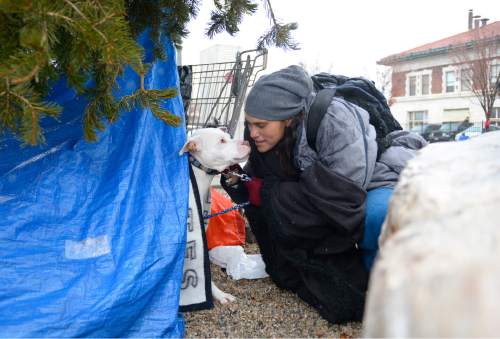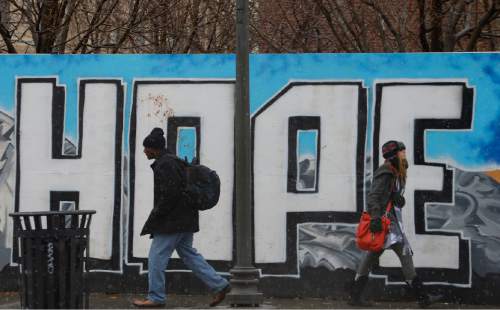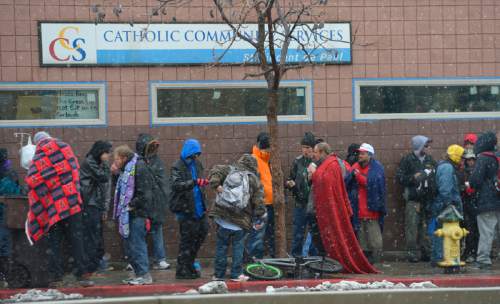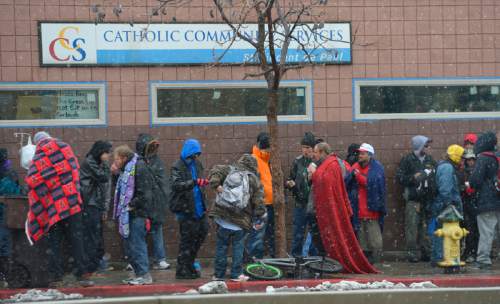This is an archived article that was published on sltrib.com in 2015, and information in the article may be outdated. It is provided only for personal research purposes and may not be reprinted.
Hunger and homelessness continue to trend upward in this country — and in Utah — and the specter of low incomes, disabilities and old age that lead to them doesn't show signs of decline.
According to the 2015 Hunger and Homeless Survey conducted by the U.S. Conference of Mayors that looked at 22 cities — including Salt Lake City — hunger and homelessness continue to increase moderately.
Homelessness in Salt Lake City is up 1 percent among families, according to the survey. Among unattached individuals, that number is up 2 percent in the period from Sept. 1, 2014, to Aug. 31, 2015.
"City officials identified lack of affordable housing as the leading cause of homelessness among families and children," the survey said. "That was followed by poverty, unemployment and low-paying jobs."
There is, however, a bright spot for Salt Lake City, according to the survey. In the category of "unmet need for shelter," Salt Lake City scored a zero, meaning there was an emergency shelter bed for everyone who requested it. That compares to a 20 percent unmet need in San Antonio, a 39 percent unmet need in Louisville, Ky., and a 60 percent unmet need in Charleston, S.C., among others.
About half of the cities surveyed expect homelessness to increase moderately in the coming year, the report said. But resources for the homeless will remain relatively flat.
Salt Lake City's "hunger profile" remains a question. Inexplicably, the survey includes no data on hunger for Salt Lake City, unlike the other 21 participating municipalities. A spokeswoman for City Hall said the Utah Food Bank did not provide the data. A spokeswoman for the Food Bank, on the other hand, said the agency had not been asked to participate in the survey for some time.
In the Hunger and Homeless Survey from Sept. 1, 2013, to Aug 31, 2014, Salt Lake City was among 16 municipalities where some needs for emergency food were not met. It appears the number of Utahns seeking emergency food has not gone down in the subsequent 12 months.
Unlike homeless people lining up at the emergency shelter, the hungry — who are not on the streets — are not so evident. Ginette Bott of the Utah Food Bank, said about 423,000 Utahns are "food insecure," meaning they don't know where their next meal is coming from. Of them, about 179,000 are children, who often miss meals.
The Utah Food Bank does not keep statistics based on municipalities, Bott said. However, in 2014 the agency delivered the equivalent of 30 million meals to pantries across the state.
By contrast, over the past 12 months, the Utah Food Bank delivered the equivalent of 33.1 million meals — an increase of 10 percent. Although the economy in Utah has improved, not everyone has benefited, Bott said.
"The clients we serve aren't necessarily qualified for those jobs," she said. "We have populations the economy is leaving behind."
Previously, one in six Utah families was living in poverty. In 2015, that number was about one in five families, according to the survey, a 20 percent increase.
Two-thirds of the cities participating reported that requests for emergency food increased an average of 2.8 percent during the 2014-2015.
A similar number of cities expect requests for emergency food will continue to increase in 2016.











